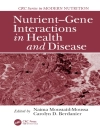Emerging contaminants are chemical and biological agents for which there is growing concern about their potential health and environmental effects. The threat lies in the fact that the sources, fate and toxicology of most of these compounds have not yet been studied. Emerging contaminants, therefore, include a large number of both recently discovered and well-known compounds such as rare earth elements, viruses, bacteria, nanomaterials, microplastics, pharmaceuticals, endocrine disruptors, hormones, personal care products, cosmetics, pesticides, surfactants and industrial chemicals. Emerging contaminants have been found in many daily products, and some of them accumulate in the food chain. Correlations have been observed between aquatic pollution by emerging contaminants and discharges from wastewater treatment plants. Most actual remediation methods are not effective at removing emerging contaminants. This first volume presents comprehensive knowledge on emerging contaminants with a focus on analysis, toxicity, antibiotic resistance and human health.
Cuprins
Preface.- Chapter 1 Emerging Contaminants: Analysis, Aquatic Compartments and Water Pollution.- Chapter 2 Occurrence, Fate and Associated Risks of Organic Micropollutants included in the Watch List in the European Groundwater Bodies.- Chapter 3 Emergence of Pathogenic Fungi Resistant to Triazole Antifungal Drugs. A Threat from the Environment- Chapter 4 The Fate of Antibiotic-Resistant Bacteria in the Environment.- Chapter 5 Relationship Between Outdoor Ambient Air Pollution and Cardiovascular Disorders: A Narrative Review.- Index.
Despre autor
Dr. Nadia Morin-Crini is an analytical chemist at the University of Bourgogne Franche-Comté, Besançon, France. Her research interests include the extraction and analysis of chemicals from various solid and liquid environmental matrices. She is responsible for a technological platform for the study of old and present environments. She has published more than 130 papers in peer-reviewed scientific journals.
Dr. Eric Lichtfouse is a professor of environmental chemistry and scientific communication at Aix-Marseille University, France and Xi’an Jiaoting University, China. He has invented carbon-13 dating based on the discovery of temporal pools of organic molecules in soils. He is Chief Editor and co-founder of the journal Environmental Chemistry Letters, and the book series Sustainable Agriculture Reviews and Environmental Chemistry for a Sustainable World. He has published the book Scientific Writing for Impact Factor Journals.
Dr. Grégorio Crini is an environmental polymer scientist at the University of Bourgogne Franche-Comté, Besançon, France. His research activities focus on the design of new polymer networks and the environmental aspects of polysaccharide chemistry. He has published more than 210 papers in international journals and is a highly cited researcher with an h-index of 38 and more than 11, 800 citations.












